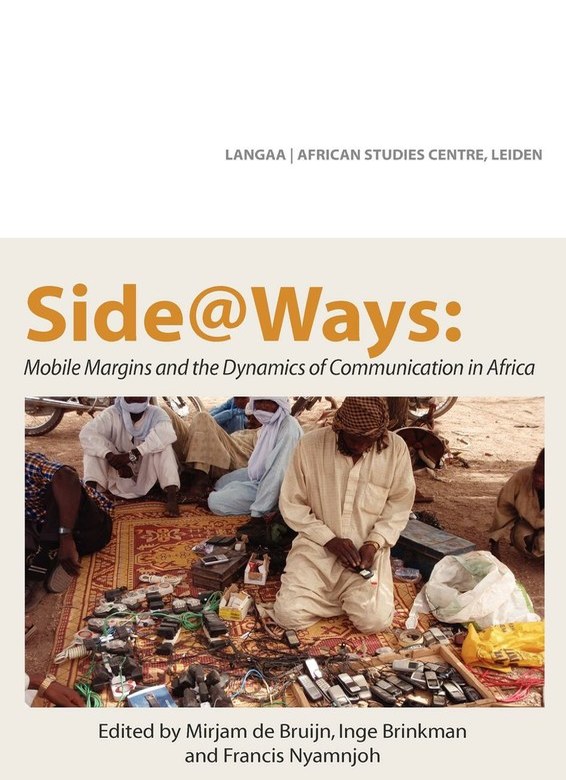edited by Mirjam de Bruijn, Francis B. Nyamnjoh and Inge Brinkman
Marginality does not mean isolation. In Africa where people are permanently on the move in search, inter alia, of a ‘better elsewhere’, marginality means disconnection to obvious possibilities and the invisibility of the myriad connections that make life possible for the ordinarily sidestepped. This book is about the workings of networks of the mobile in Africa, a continent usually associated with the ‘global shadows’ of the world. How do changes in the possibilities for communication, with the recent hype of mobile technology, influence the social and economic dynamics in Africa’s mobile margins? To what extent is the freedom associated with new Information and Communication Technologies reality or disillusion for people dwelling in the margins? Are ordinary Africans increasingly Side@Ways? How social are these emergent Side@Ways? Contributions to answering these and related questions are harvested from ethnographic insights by team members of the WOTRO funded ‘Mobile Africa revisited’ research programme hosted by the African Studies Centre, Leiden, The Netherlands.
| ISBN | 9789956728763 |
| Pages | 210 |
| Dimensions | 244 x 170 mm |
| Published | 2013 |
| Publisher | Langaa RPCIG, Cameroon |
| Format | Paperback |







2 comments
“The editors have produced a volume that instructs us in the nuances and ambiguities surrounding the impact of mobile phones in Africa. By stressing the marginal, they expose the creativity of mobility; by drawing our attention to new connectivities they reveal ambivalent images of networks and possibilities of communication. The policing and control of mobile margins may have more baleful consequences. No easy generalities emerge and this volume tells us why. A must read.”
Michael Rowlands, Emeritus Professor of Anthropology and Material Culture, University College London
“From voluntary migrants and refugees to traders, foot messengers and university students, Side@ways takes the reader on a journey to Africa’s mobile margins. Focused upon the everyday use of mobile phones, the authors’ historically situated and nuanced accounts counter many assumptions about connection and disconnection inherent in mobile phone use and, ultimately, the treatment of the mobile phone as Africa’s latest panacea. Conceptually novel and empirically rich, this edited volume is an exemplar of the insights ethnographic approaches contribute to our understanding of the digital revolution.”
Heather A. Horst, Vice Chancellor’s Senior Research Fellow and Co-Director, Digital Ethnography Research Centre, RMIT University, Australia